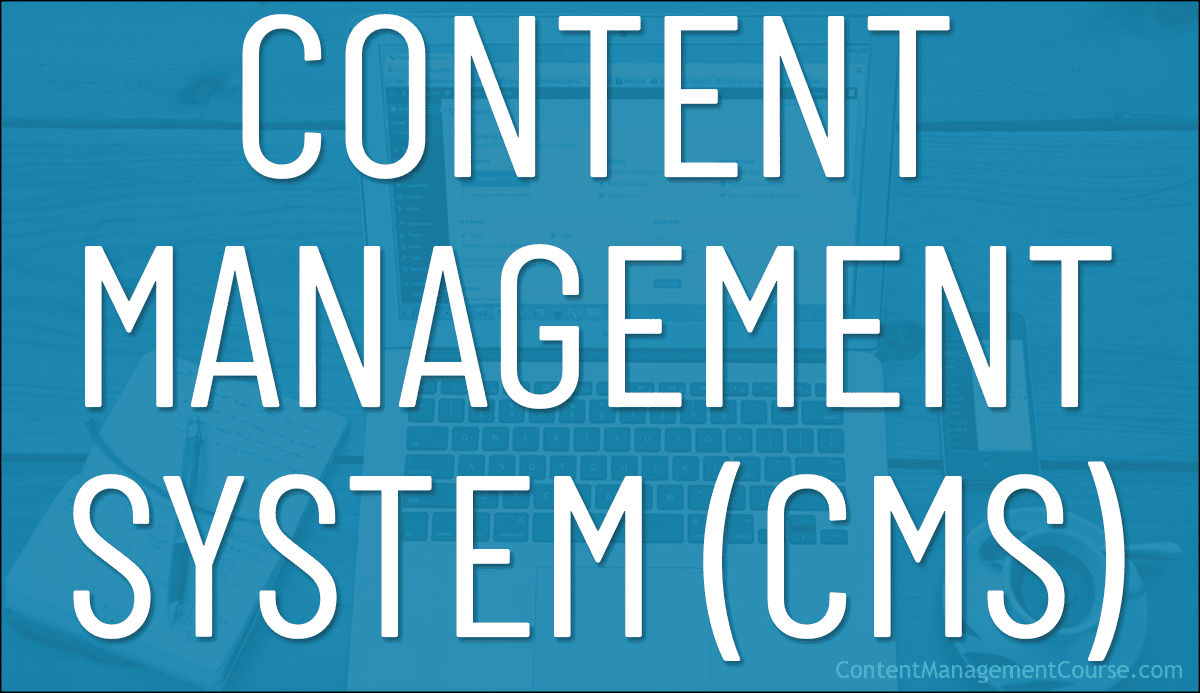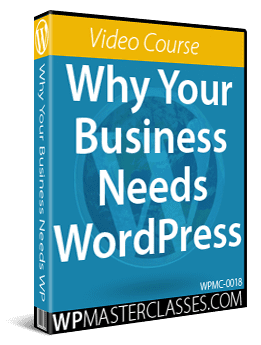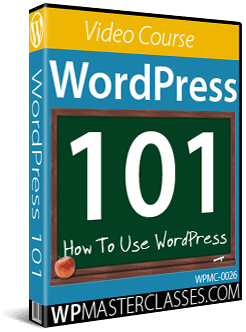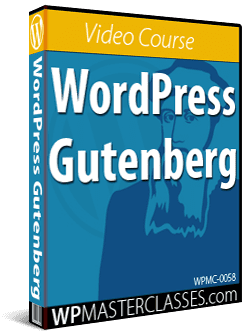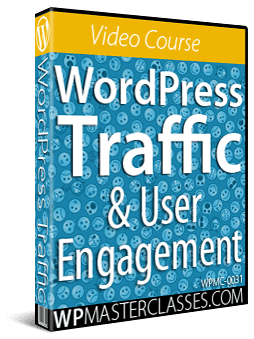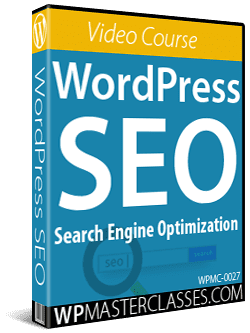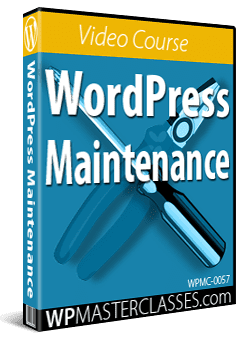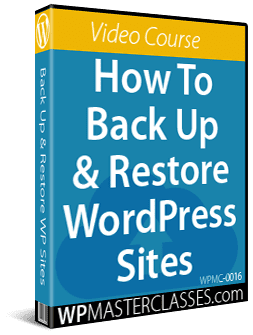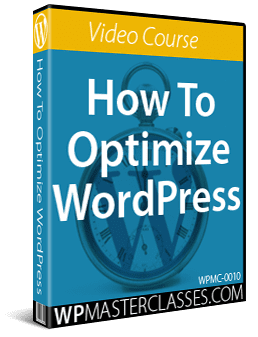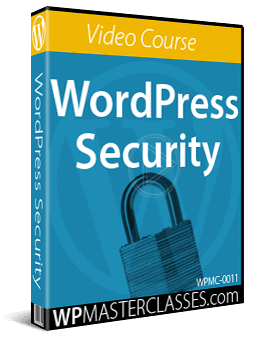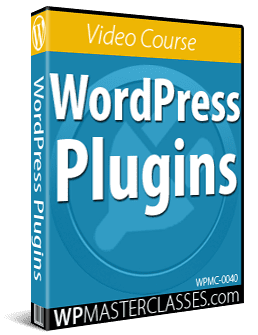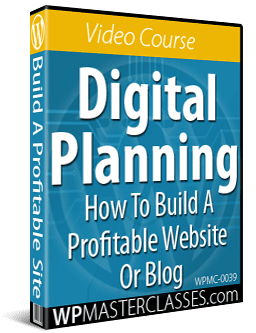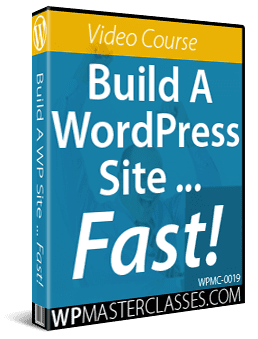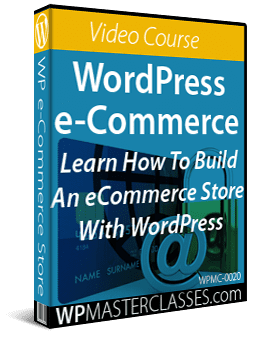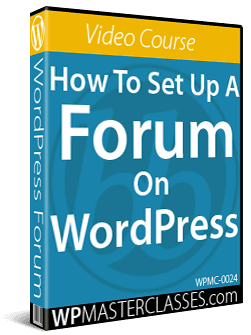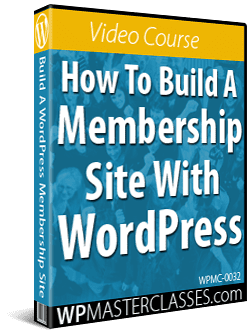Content Management System (CMS)
Learn how a content management system (CMS) can help you manage your content more effectively.
 A Content Management System (CMS) is a software application that allows users to easily create, manage, and publish digital content, typically for websites.
A Content Management System (CMS) is a software application that allows users to easily create, manage, and publish digital content, typically for websites.
It provides an interface for users to add and edit text, images, videos, and other types of digital media, and to manage the organization and presentation of that content.
A CMS typically includes a database to store the content and a set of tools for managing users, permissions, and workflow.
Note: While there are different types of content management systems available, this course focuses mostly on using WordPress, a popular and free CMS platform that allows businesses to easily manage their content and most aspects of their website without requiring technical skills or relying on technical experts.
In this lesson, you will learn why a CMS is a powerful content management tool, discover the benefits of using a content management system, explore different CMS platforms, and discover what you can do using the WordPress CMS platform.
***
What Is A Content Management System (CMS)?
A content management system (CMS) is a software application that provides a centralized platform for organizing, storing, and managing digital content.
A CMS typically includes a variety of tools for creating, editing, and publishing content, as well as for managing the content lifecycle, which includes tasks such as version control, workflow, and publishing.
The main goal of a CMS is to simplify the process of managing content, making it easier for organizations to keep their digital content up-to-date and consistent.
A CMS typically includes a user-friendly interface that makes it easy for non-technical users to manage content, as well as features such as templates, workflows, and access controls that allow organizations to maintain a consistent look and feel across their digital properties.
CMSs can be used to manage a variety of content types, including web pages, blog posts, images, videos, and more. Some CMSs are designed for specific types of content, such as e-commerce products, while others are more general-purpose and can be used for any type of digital content.
Why Use A Content Management System (CMS)?
A Content Management System (CMS) allows your business to easily manage and publish website content without the need for technical skills.
Some of the key benefits and features of using a CMS to manage your website content include:
- Ease of use: A CMS typically has a user-friendly interface that allows non-technical users to easily create, edit, and publish content on the website.
- Centralized control: A CMS allows multiple users to access and manage your website’s content, which is particularly useful if your business has multiple departments or team members responsible for different aspects of the website.
- Versatility: A CMS can be used to manage different types of content, such as text, images, videos, and audio files.
- Collaboration: A CMS allows multiple users to work on the same website content, making it easy for teams to collaborate and review changes before they are published.
- Scalability: As your business grows, a CMS can easily be scaled to accommodate more content, users, and features. A CMS can also be used to manage small websites or large, complex sites with thousands of pages.
- Search engine optimization (SEO): Many content management systems include built-in SEO features, such as the ability to create custom URLs and meta tags, which can help improve your website’s visibility in search engine results.
- Security: A CMS can provide security features such as user access controls and backups, which can help prevent unauthorized access to your website and protect against data loss.
Popular CMS Platforms
There are many popular content management systems to choose from, each with its own set of features and capabilities.
Platforms like WordPress, Joomla!, and Drupal are open-source and have a wide range of functionalities, templates, and plugins that can be used to customize your website to suit the needs of your business.
For a comprehensive list and information on popular content management systems, go here: Web Content Management Systems (WCMS)
A Very Brief History Of Websites
Pre-CMS / Static Websites
Before Content Management Systems came along, websites were traditionally built by gathering together a collection of separately linked static pages where every element of a page (e.g. navigation menus, page layout, content, etc.) was created using web code (e.g. HTML) and assembled by a web designer or website developer using a web editor application tool (e.g. Dreamweaver).

These separate pages were then uploaded to a web server and accessed online by typing in the page URL associated with the page file into a web browser.
Then, something called a Content Management System, or CMS came along.

A Content Management System is an application that lets you organize and store all your documents, images, videos, and any other type of digital content on a database, and quickly and easily add, retrieve, edit, delete and publish content on your website with no coding skills required.
A CMS also allows multiple editors and authors to access, manage and work collaboratively on a website’s content and publish it under different authors and in different areas of the website.
A CMS also takes care of a number of “behind the scenes” content management tasks such as:
- Generating website navigation elements automatically (e.g. menus, links, etc.)
- Storing content in an organized way, making it searchable, findable, and indexable.
- Keeping track of registered users, including managing user permissions, logins, and security settings.
- Allowing multiple users to collaborate, edit and publish content on the site.
- And much more.

In short, a Content Management System gives businesses complete control over their content and its management and lets anyone easily perform content-related tasks, like:
- Content creation, editing, and deletion
- Content publishing / content delivery
- Content organization (e.g. archiving)
- Content formatting
- Content revision
- Content indexing, searching, and retrieval
- Content export and import
Now that you understand a little more about the benefits of using a content management system, let’s talk about the CMS platform we recommend using to build and manage a website.
It’s called WordPress.

Why Use WordPress?
WordPress is the world’s leading CMS platform. WordPress is 100% FREE and is used to power millions of websites around the world (over 40% of all websites).

 WordPress is:
WordPress is:
- Free
- Easy to use
- Easy to manage
- SEO friendly
- Mobile friendly
- Powerful
- Flexible
- Interactive
- Secure
- Cost-effective
- Well supported
WordPress is much more than a CMS. It’s a complete website-building and web-publishing platform. You can build any type of website you like with WordPress and easily change anything and everything on the site anytime you want.
Using WordPress is easy and requires no technical expertise or coding skills.
There are many ways that WordPress puts your business in complete control of your digital presence.
For example, WordPress gives your business a “speed to market” advantage…

WordPress also lets you publish time-sensitive content quickly and make it available online immediately. This is great for getting information out fast, such as:
- Limited-time offers, special offers, discounts, etc.
- New product releases, new product reviews, promotional videos
- Company announcements
- Industry or company events
- Pricing updates
- Customer/Reseller training tips, etc.
After your WordPress site has been set up and configured, you can easily create rich content anytime you think of something you would like to inform, promote, or communicate to others.
Then, simply hit the “publish” button and the information will be made live immediately and instantly available to online users.
Management & Marketing Automation
Another reason WordPress puts your business in control of your digital presence is that your website can be expertly configured so that all you need to do is publish new content and WordPress will then automatically and instantly:
- Notify search engines like Google, Bing, etc. (you can specify exactly how you want Google to display your listings in its search results),
- Post excerpts of the content to social media sites like Facebook, Twitter, LinkedIn, etc. with links pointing back to the website (you can specify exactly how excerpts should display on social media sites),
- Notify and syndicate dozens and even hundreds of other online properties like blogs, search directories, social bookmarking sites, RSS feed aggregators, etc.

Instead of a ‘static’ web presence that involves time-consuming activities like publishing content on a website and posting new content on social media accounts and other online properties to drive traffic and generate leads, your WordPress site can be configured to instantly syndicate (i.e. distribute) and get your newly-published content indexed faster, automatically driving more web traffic and generating new leads for your business…

WordPress lets you set up a content distribution and a lead and traffic generation system automatically…

WordPress can also automate management and maintenance tasks on a website like scheduling files and data backups, updating software, adding and managing new users, and more.
An expertly configured WordPress site lets you do all this by configuring internal (i.e. built-in) settings, adding different add-ons, and integrating many essential (and mostly free) external services…

As your business grows and evolves, you can easily add more functionality and automation to your WordPress site at minimal cost, like:
- Adding eCommerce to sell products and services and process payments online
- Capturing leads with opt-in forms and automatically adding new subscribers to newsletters and autoresponders
- Adding a membership site that allows visitors to register on the site as private members with different membership levels, unique logins, etc.
- Adding directories, forums, social networking features, social sharing, and engagement features, etc.
- And so much more!
All this can be done inexpensively (or even for free) in WordPress using ‘app-like’ add-ons called plugins.
Once plugins are installed and configured, you can direct your site visitors to different areas of your website such as your online store, subscription forms, membership area, directories, etc. using calls to action placed in your content, graphic banners, navigation menus, etc. and let the automated processes configured on your site and your plugins do the rest.
Additionally, WordPress comes with a powerful built-in Content Management System (CMS) that works right out of the box, allowing you to easily create and manage your digital content, website administration (including updating and backing up site files and data), and automate various aspects of your digital marketing.
One of the many benefits of using the WordPress CMS is that it is 100% free to use and modify for any commercial purpose. This helps to prevent you from becoming locked into a ‘proprietary’ CMS platform that could make it harder to leave or switch to another provider.
So…
You can configure your WordPress site to automate management and marketing processes like backups, content distribution, and syndication, search engine indexing, web traffic generation, lead, and sales automation, and more, without involving website developers or web designers or requiring technical expertise or coding skills.
You can also easily look after ongoing management processes like keeping your site’s software and plugins updated, adding and configuring new site functionality, making changes to site design, layout, and content to improve sales conversions, and training other team members to do the same without hiring website developers or web designers.
Building a website with WordPress, then, puts you in complete control of your digital business processes, saving you considerable money and allowing you to generate better online results.

A CMS platform like WordPress can put your business in complete control of your digital presence, automate key digital management, content scheduling, and marketing processes, and help you improve your online business online results.
A WordPress website can also be expanded easily and inexpensively at any time and allows businesses to integrate additional features, functionality, and services like:
- Social media, social media content sharing, and social engagement tools
- External services and accounts (e.g., Google webmasters, SaaS, and cloud services)
- eCommerce, membership sites, directories, event bookings, and registrations, etc.
- Support services (helpdesks, online chat, forums, affiliate management, etc.)
- Subscriber options (newsletters, autoresponders, opt-in forms, etc.)
- Reporting tools (e.g., server monitoring, web analytics, etc.)
- And many additional functions.
Unique WordPress Features
WordPress includes many unique features that make managing websites easy, including:
Plugins
Like most apps and add-ons, plugins install with a few clicks and allow users to easily add and configure almost every kind of functionality imaginable to their website (e.g. forms, banner ad management, membership sites, directories, e-commerce, notifications, live chat, pricing tables, etc.).
Learn more about plugins here: Using WordPress Plugins
Themes
Themes are web design templates that let users change the entire look and feel of their site and/or customize the site’s web design with just a few clicks without affecting its content.
Learn more about plugins here: Using WordPress Themes
Widgets
Widgets let users reorganize and rearrange the site’s web layout and add new functionality without touching code using features like drag and drop and pulldown menus.
Learn more about plugins here: Using WordPress Widgets
And More…
Additional unique features of WordPress that make managing a website easier include a customizable dashboard, a visual content editor and block editor, custom navigation menus, custom post types, live previews, updates, setting different user roles, permissions, and logins, comment moderation, site cleanup, optimization, and security tools, and a whole lot more!
WordPress can also be configured to fully automate or reduce many complex website management tasks to processes using a few clicks.
This includes:
- Managing and scheduling content for publishing
- Performing data and file backups
- Updating core software, plugins, and themes
- Registering and managing users and subscribers
- Moderating comments from visitors, preventing comment SPAM, etc.
- Preventing brute force attacks and threats from malware and hackers
- Fixing broken links in the content
- Redirecting visitors to other pages
- Generating user, statistical, performance, and sales reports
- Notifying management and administrators if there are any problems with the site
- And more.
Depending on what your business wants to achieve online, WordPress can also easily add and automate the management of features and functionality like:
- Setting up an e-commerce store (and automating areas like featured product information, online payment processing, emailing customers download links, product delivery information, emails to prevent cart abandonment, etc.)
- Providing customer service tools, services, and information sections like a knowledgebase, support helpdesks, live chat, FAQs, etc.
- Setting up business directories and advertising zones (and automating processes that allow users to buy, manage, and renew their listings and advertisements)
- Running event and booking sites (and automating the management of event bookings and registrations, setting up appointments, scheduling deliveries of online course content or webinars, ticket printing, confirmations, etc.)
- Setting up an affiliate program (and automating affiliate management tasks, commission reports, payments, etc.)
- Setting up and automating many other tasks like scheduling and posting content to social media, adding subscribers to newsletters and customer lists, processing contact information, engaging users with customer surveys and user polls, and so much more.
Most Websites Are Powered By WordPress
Not only are millions of websites around the world built using WordPress, but if one in every three websites is powered by WordPress, the chances are that if your business has a website, it is probably also powered by WordPress!

To check if your website or blog is built using WordPress, go here: How To Tell If Your Website Is Powered By WordPress
Summary
A content management system (CMS) is a software application that allows users to create, manage, and publish digital content.
A CMS is an essential tool for businesses that want to easily manage and publish content on their website. It allows non-technical users to easily create, edit, and publish content, while also providing tools for collaboration, scalability, SEO, and security.
It’s important to research different CMS options and choose one that fits the specific needs of your business.
Some of the most popular CMS platforms include WordPress, Joomla, and Drupal.
Joomla is a popular open-source CMS, it is more complex than WordPress, but it is good for managing large and complex websites.
Drupal is also an open-source CMS, it is more powerful, and it is best used for creating complex, large-scale websites.
WordPress is the world’s most widely used content management system. It is free and open-source, and it has a wide variety of themes and plugins to choose from. It is also the platform used to power millions of professional websites and blogs around the world.
WordPress is:
- 100% free open-source software
- Highly flexible, scalable, and customizable (can be adapted for any use)
- Supported by a community of tens of thousands of web developers (continually updated to improve security, add new features, and fix bugs & issues).
Resources
If you need help using WordPress, see the resources below:
WordPress User Tutorials
Here are the best resources for learning how to use your WordPress website and CMS effectively:
WPTrainingManual.com

WPTrainingManual.com provides the most comprehensive and up-to-date WordPress step-by-step tutorials for non-technical users and non-coders available.
These tutorials are 100% free to access (and download as a PDF, print, or share via email), and will help you learn how to use your WordPress site and CMS effectively.

Additionally, you can download The Complete WordPress Step-By-Step WordPress User Manual – a comprehensive, fully illustrated, and regularly updated 2,100+ page downloadable WordPress user manual for non-techies.
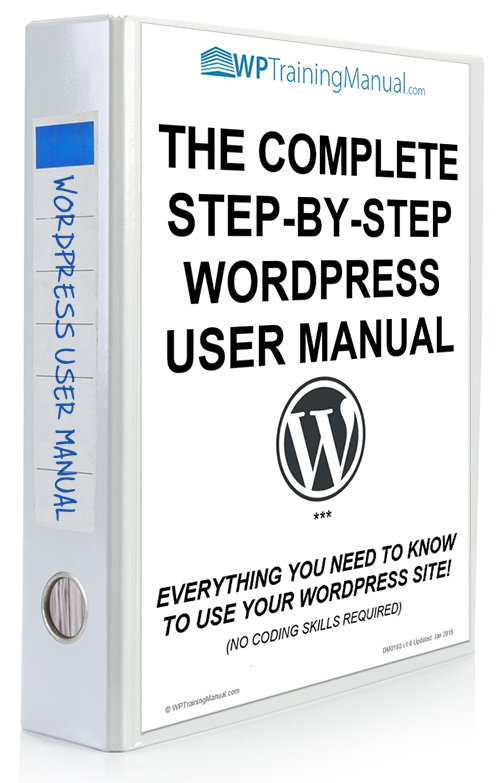
For more information and to access all the free WordPress tutorials, go here: WPTrainingManual.com
WPMasterclasses.com

WPMasterclasses.com is a WordPress and digital business video training site with dozens of video courses and 2,000+ video tutorials on using WordPress and covering essential digital business areas.
Here are some of the WordPress video courses available on WPMasterclasses.com (note: you can access all of the video courses below with a single all-access pass):
WordPress Video Courses
 Why Your Business Needs WordPress
Why Your Business Needs WordPress
Learn about the unique features, benefits, and advantages of using WordPress to start or grow your business online.
More info: Why Your Business Needs WordPress
 WordPress 101: How To Use WordPress
WordPress 101: How To Use WordPress
Learn how to unlock the power of the WordPress content management system (CMS) using the many powerful features inside your WordPress administration area.
More info: WordPress 101: How To Use WordPress
 WordPress Gutenberg
WordPress Gutenberg
Learn how to use the WordPress Gutenberg editor with this video course.
More info: WordPress Gutenberg
 WordPress Traffic & User Engagement
WordPress Traffic & User Engagement
Learn how to drive more targeted traffic to your website and discover ways to improve user engagement with your business online.
More info: WordPress Traffic & User Engagement
WordPress SEO
Learn how to optimize your WordPress site and how to craft website pages and blog posts that will help you get better search engine rankings and improve your traffic results.
More info: WordPress SEO
 WordPress Maintenance
WordPress Maintenance
This video course takes you step-by-step through the WordPress Maintenance Process and shows you how to keep your WordPress site updated, protected, and error-free!
More info: WordPress Maintenance
 How To Back Up & Restore WordPress Sites
How To Back Up & Restore WordPress Sites
Learn how to safely and automatically back up your WordPress files and database and how to easily restore your WordPress site if something unexpected or disastrous were to happen.
More info: How To Back Up & Restore WordPress Sites
 How To Optimize WordPress
How To Optimize WordPress
Learn how to optimize your WordPress site and improve your page loading speed.
More info: How To Optimize WordPress
 WordPress Security
WordPress Security
Learn how to keep your WordPress site or blog secure and protected from malware, hackers, and brute-force attacks.
More info: WordPress Security
 WordPress Plugins
WordPress Plugins
Learn how WordPress plugins work, how to find, install, and update plugins on your site, and how to expand your WordPress site’s functionality in almost unlimited ways.
More info: WordPress Plugins
 Digital Planning: How To Build A Profitable Website Or Blog
Digital Planning: How To Build A Profitable Website Or Blog
Learn how to plan and build a profitable website or blog using a proven and easy-to-follow strategy.
More info: Digital Planning: How To Build A Profitable Website Or Blog
 Build A WordPress Site Fast
Build A WordPress Site Fast
Need a new website or blog in a hurry? This video course shows you how to quickly install and configure a WordPress website or blog on your own domain name.
More info: Build A WordPress Site Fast
 Learn How To Build An eCommerce Store With WordPress
Learn How To Build An eCommerce Store With WordPress
Learn how to set up an e-commerce store on your WordPress site using e-commerce platforms like WooCommerce and Easy Digital Downloads.
More info: Learn How To Build An eCommerce Store With WordPress
 How To Set Up A Forum On WordPress
How To Set Up A Forum On WordPress
Learn how to set up a forum for your visitors, prospects, customers, members, or affiliates using WordPress.
More info: How To Set Up A Forum On WordPress
 How To Build A Membership Site With WordPress
How To Build A Membership Site With WordPress
Learn how to plan, build, grow, and maintain a viable membership site using WordPress that can be easily scaled and automated to become a sustainable, cost-effective, and profitable asset for many years to come.
More info: How To Build A Membership Site With WordPress
![]()
 You can purchase access to individual courses for a one-time fee or purchase an ALL ACCESS PASS video training site membership for a low annual subscription.
You can purchase access to individual courses for a one-time fee or purchase an ALL ACCESS PASS video training site membership for a low annual subscription.
The All Access Pass membership gives you 24/7 ongoing access to 60+ digital business skills and WordPress CMS video courses (over 2,100+ self-paced video lessons and 225+ hours of videos).
For more details of all available video courses, go here: WPMasterclasses.com
WordPress Site Management
The choice of managing and maintaining your WordPress site is completely up to you. You can outsource your site management to professionals or learn how to do it yourself.
Here are the best resources available if you choose to do it yourself:
WPCompendium.org
WPCompendium.org provides hundreds of FREE detailed step-by-step tutorials that will teach you everything you need to know to build and manage a WordPress site with no coding knowledge or technical skills required.
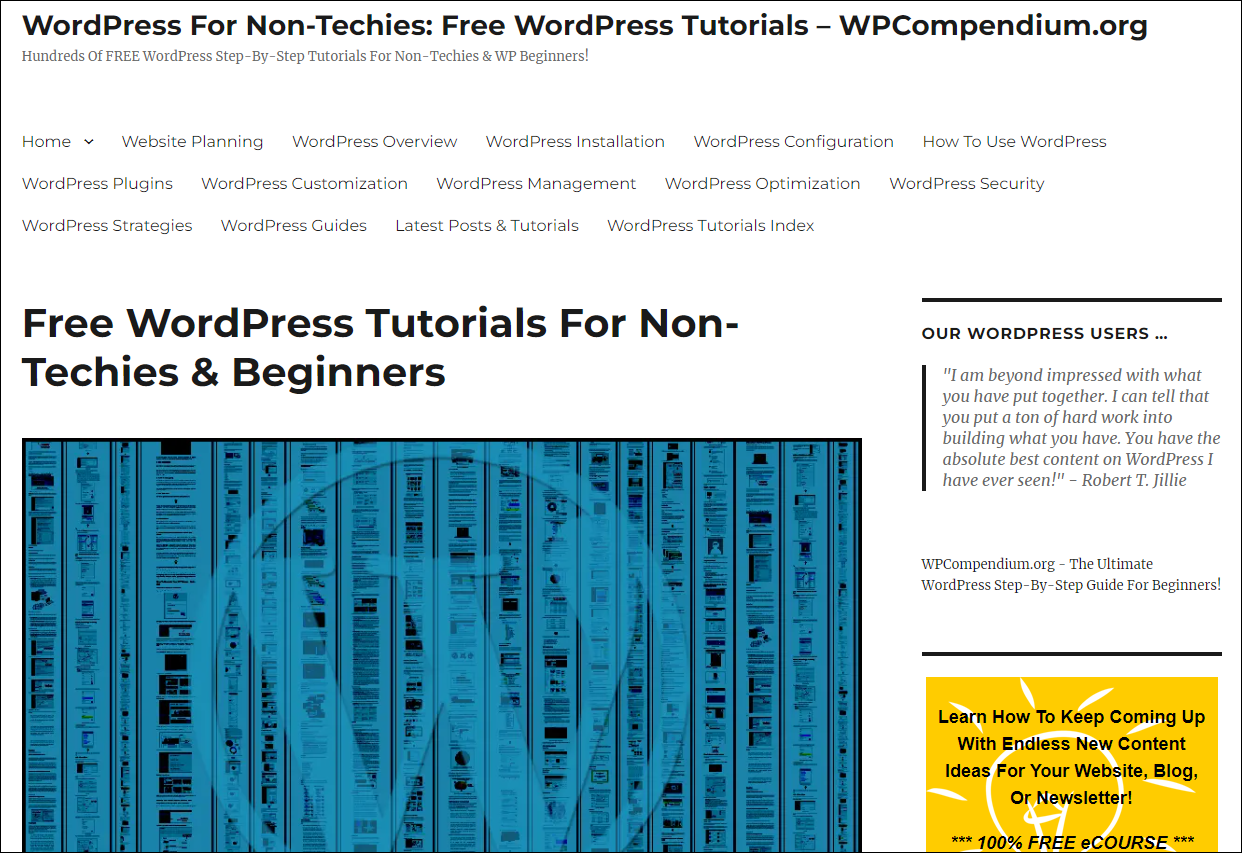
The tutorials on WPCompendium.org are fully interlinked for ease of navigation, allowing you to learn WordPress at your own pace, and organized into comprehensive training modules covering all areas of WordPress:
- Website Planning
- WordPress Overview
- How To Install WordPress
- How To Configure WordPress
- How To Use WordPress
- WordPress Plugins
- How To Customize WordPress
- WordPress Site Management
- WordPress Site Optimization
- WordPress Site Security
- WordPress Business Strategies
WPMU DEV

WPMU DEV provides a complete WordPress site management and dedicated hosting platform with professional plugins covering everything from SEO, optimization, and security, to marketing, forms, analytics, and more, plus 24/7 expert support on all things related to WordPress.
While the site is aimed mostly at WordPress web developers, if you are an advanced WordPress user or DIY site manager, we recommend visiting the WPMU DEV Blog containing thousands of advanced and useful WordPress tutorials, and subscribing to their email newsletter for regular WordPress tips and information.

Additionally, we recommend becoming a WPMU DEV member. A WPMU DEV membership includes everything you need to manage unlimited WordPress sites effectively.
You can sign up for a free membership (no credit card required) and try out for yourself all the service offers.
To register for a free account, visit WPMU DEV.
Additional Resources
We recommend the following resources to help build your content management skills:
- Content Troubleshooting Guide – Use this guide to troubleshoot content-related issues.
- Digital Business Video Courses – Video courses to help you develop the digital skills you need to manage content effectively.
- The Small Business Digital Manager – This guide covers the challenges many small businesses face running an effective digital presence and provides practical ways to address these.
Also, visit our tools and resources section for additional courses, guides, and helpful tools and resources for managing your content effectively.
Digital Business – Module Lessons
Below are all the lessons included in this module. Click on a link to go directly to the lesson:

The Role Of The Content Manager
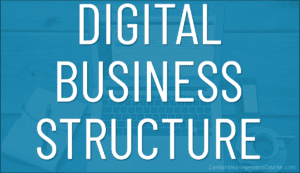
Digital Business Structure
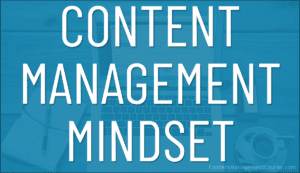
Content Management Mindset

Content Management Skills
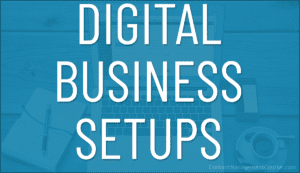
Digital Business Setups
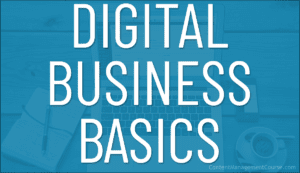
Digital Business Basics

Digital Content Team

Content-Related Jobs and Careers

Content Management Tools
***
Images: WordPress logo, WordPress screen, Blackboard
